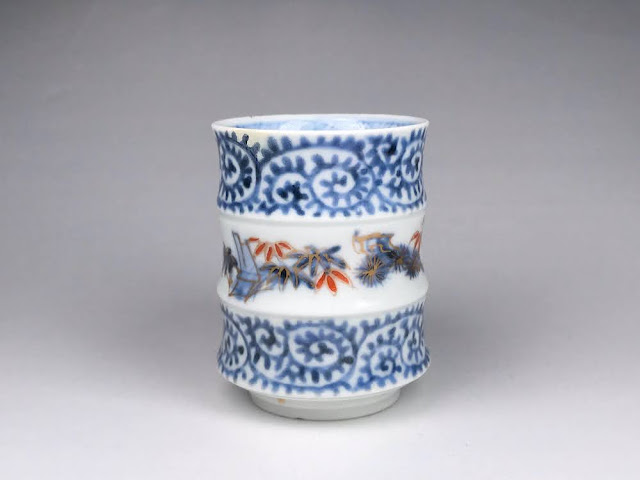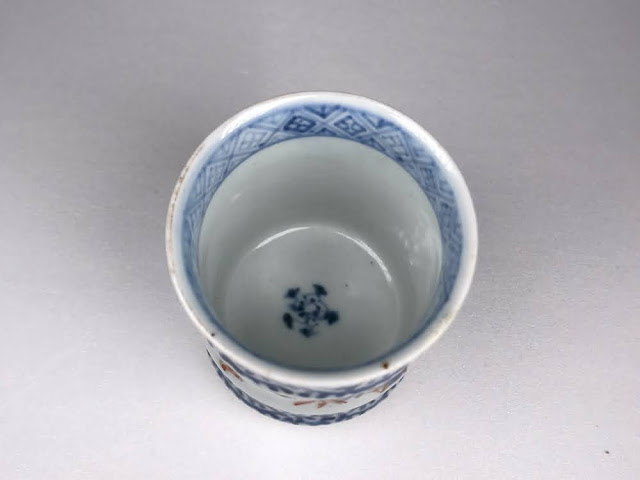松竹梅・蛸唐草文 竹節形猪口 Tako-Karakusa Pattern Bamboo-Shaped Cup
口径 top width: 51 mm / 高さ height: 67 mm / 高台径 bottom width: 38 mm
節をもった竹のように外側が段々になったユニークな形状ののぞき猪口。器の内側の面はなめらか。ろくろで一気にこの形につくったのか、あるいは一度ある程度成形してから、細い粘土のひもを胴に巻きつけてなめらかにならしたものなのか、興味深いところだ。上下に古伊万里の伝統文様であるタコ唐草、真ん中に松竹梅の文様をそれぞれ染付で描いて、さらに一部を赤絵と金彩で上絵付けしている。形状が「竹」でさらに「松竹梅」の文様を重ねている。竹の力強さとタコ唐草とがマッチしているとおもう。タコ唐草の巻き方を見る限り、18世紀中頃くらいの時代はありそうだ。残念ながら縁にカケがあり、共直ししている。
A nozoki-type Imari cup that has a unique shape like a bamboo. The inner surface is smooth in contrast to the outer wavy surface. It is interesting whether this shape was created at once on a wheel or an ordinary cup was made at first and then thin cray strings were rounded on the outer surface. Tako-karakusa (octopus-leg arabesque) and shochikubai (pine-bamboo-plum) patterns are drawn with blue glaze, and red and gold glazes are also used in part. The way of drawing tako-karakusa suggests it was made around the mid 18th century. A defect at the rim has been repaired.
It is tall for its width. It has a diamond pattern at the inner uppermost part and a five-petal symbol at the bottom.


